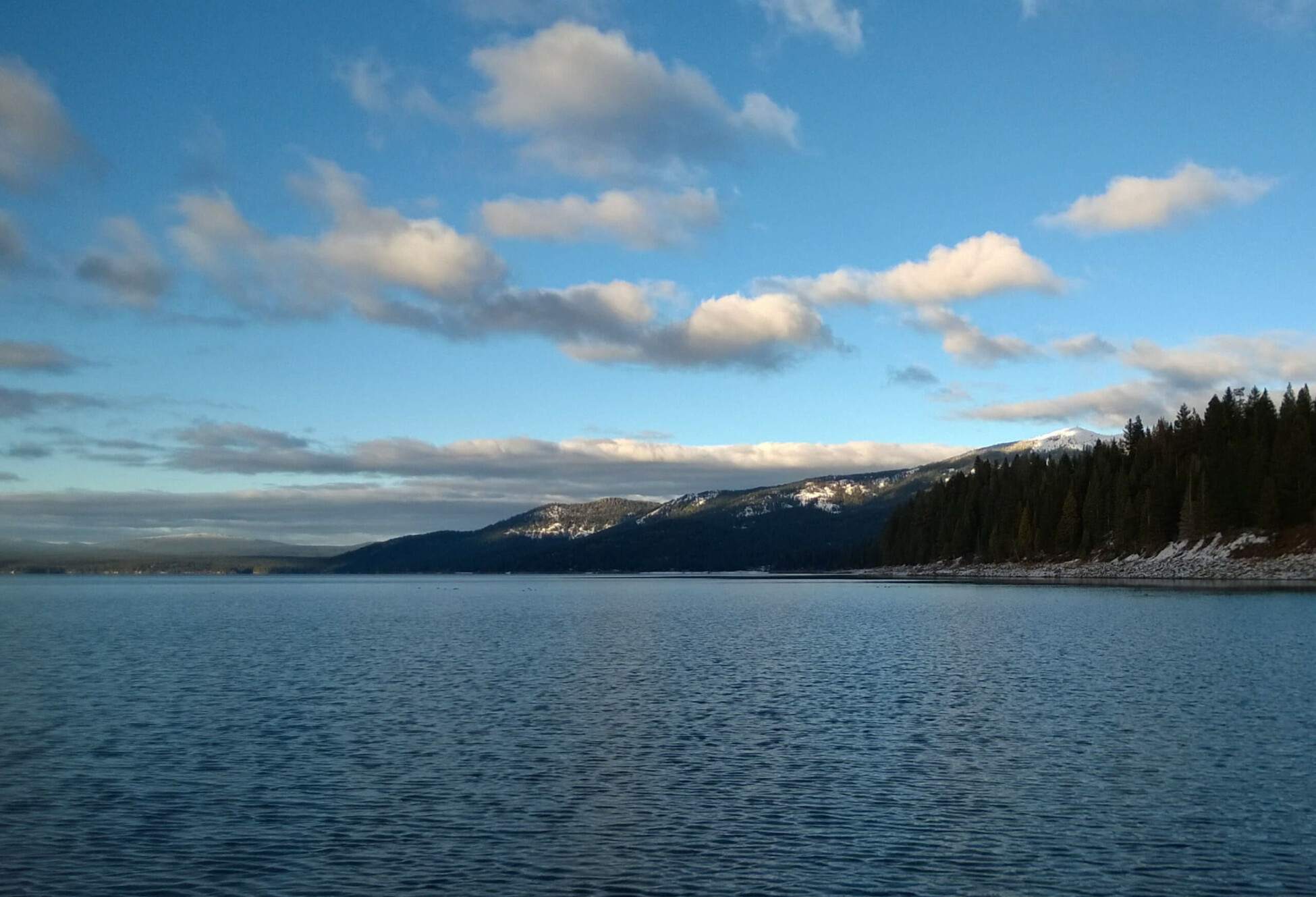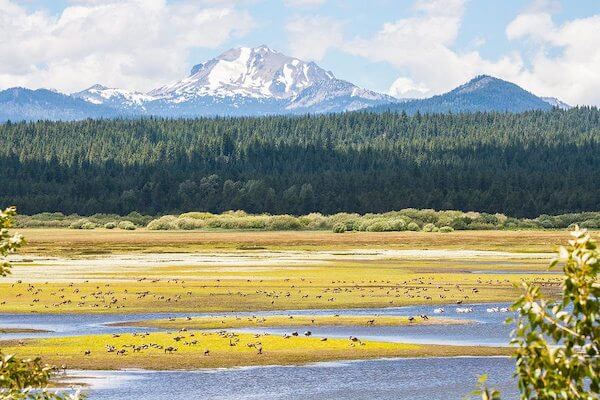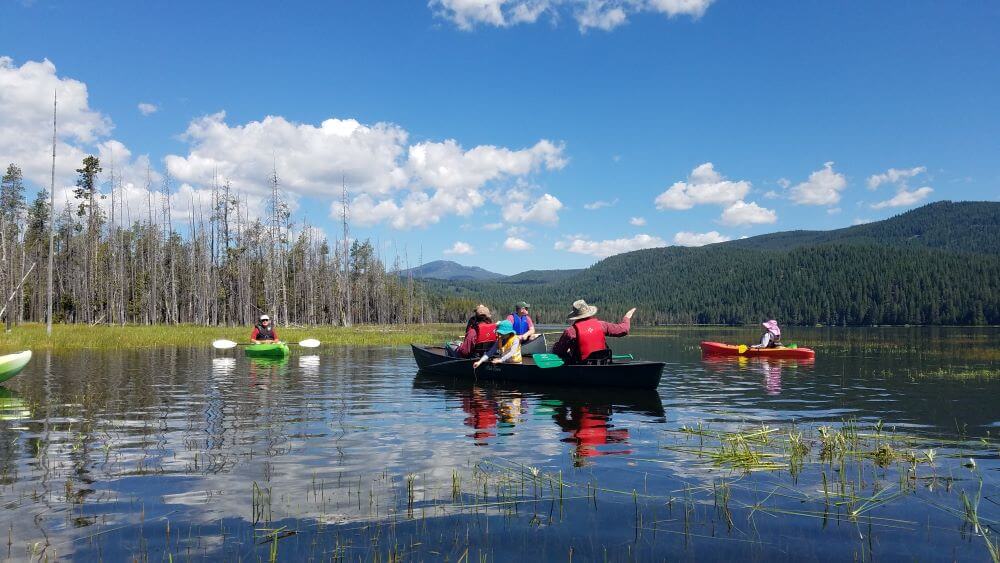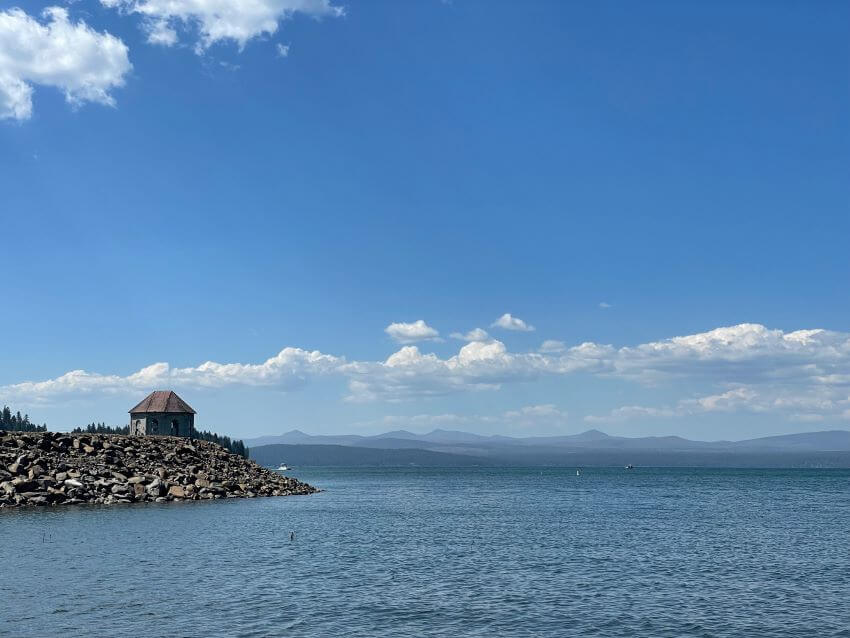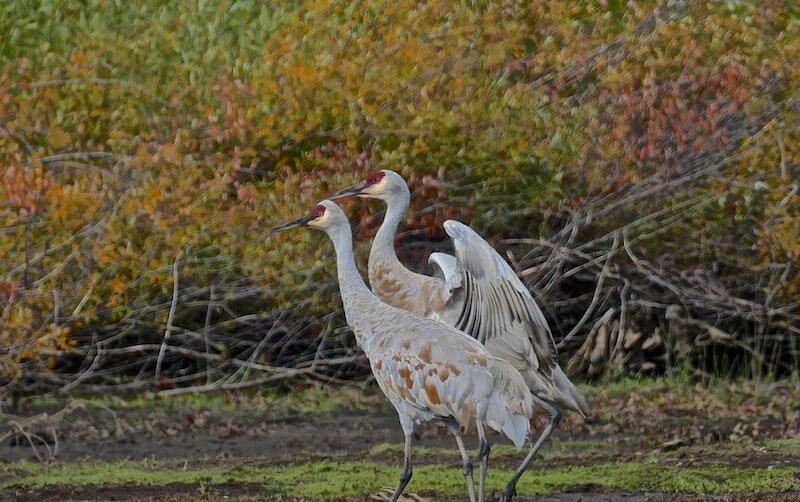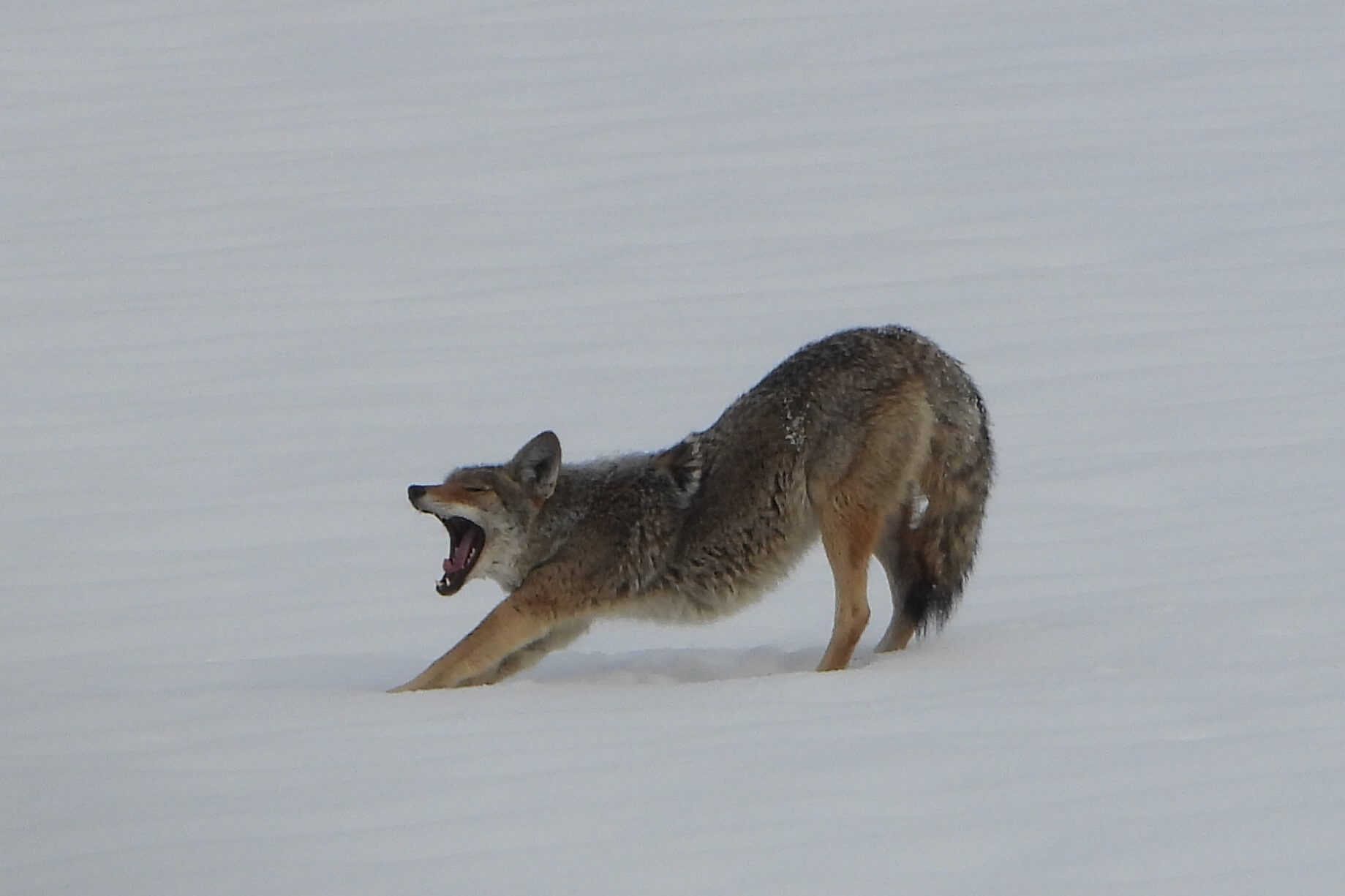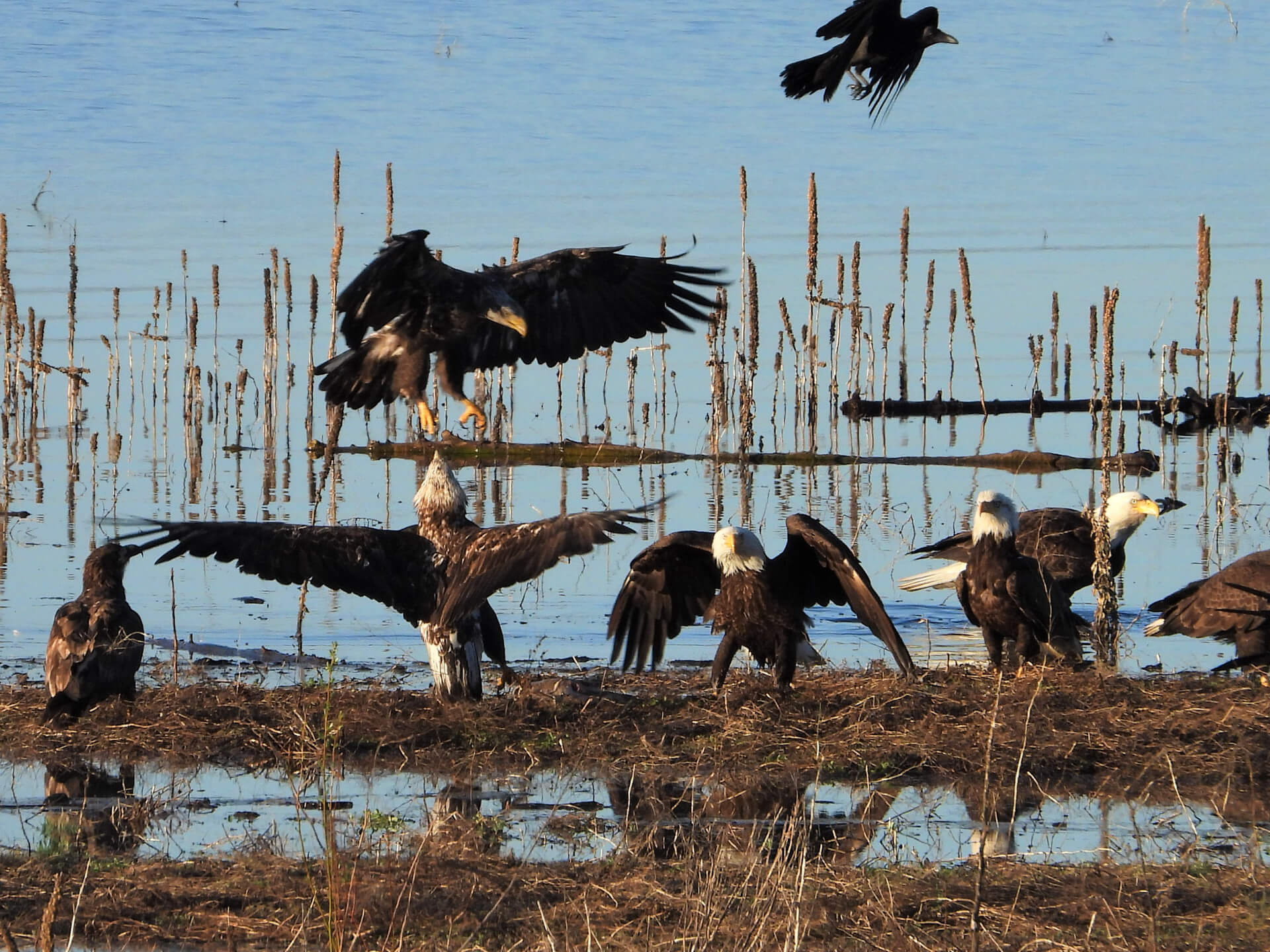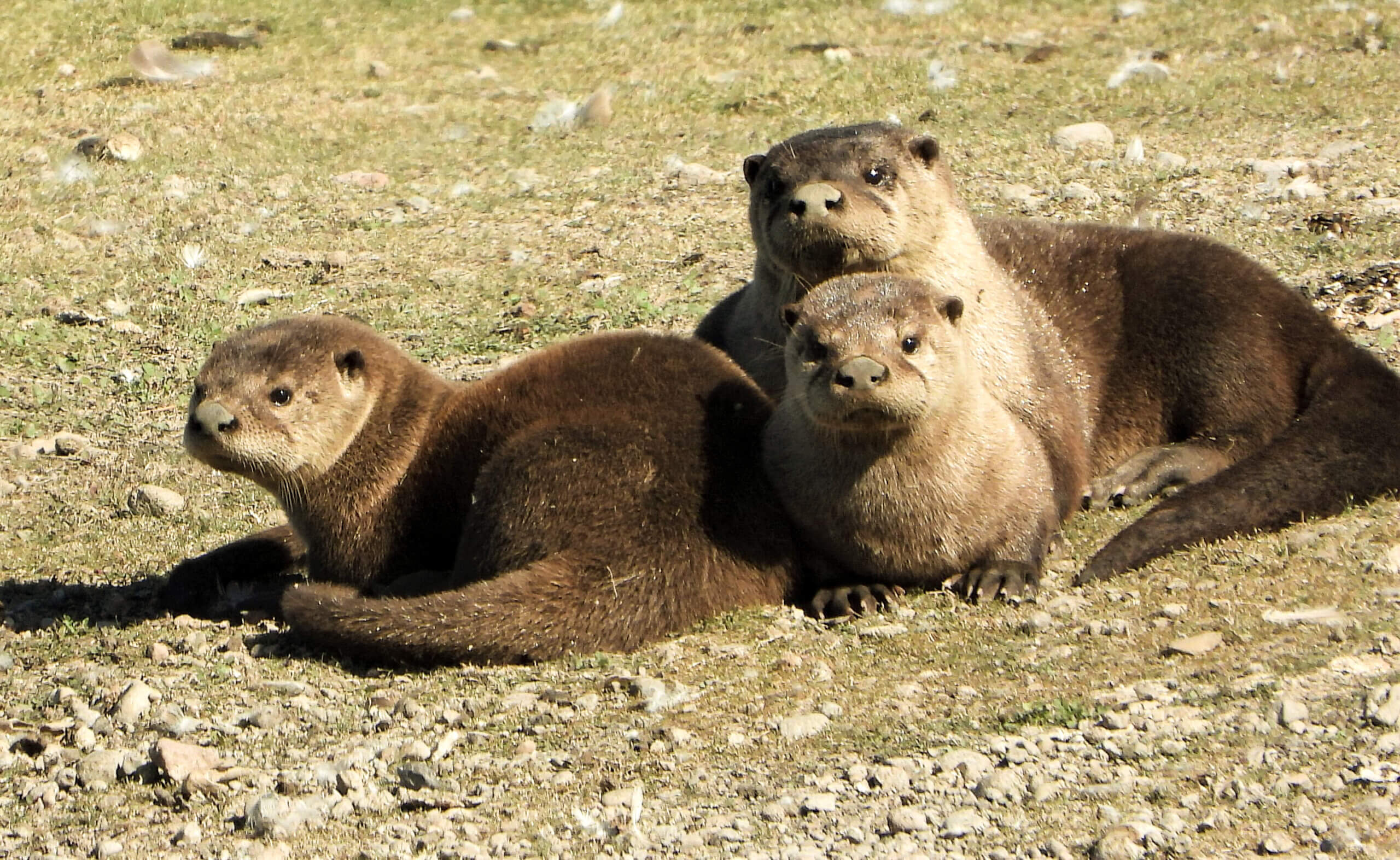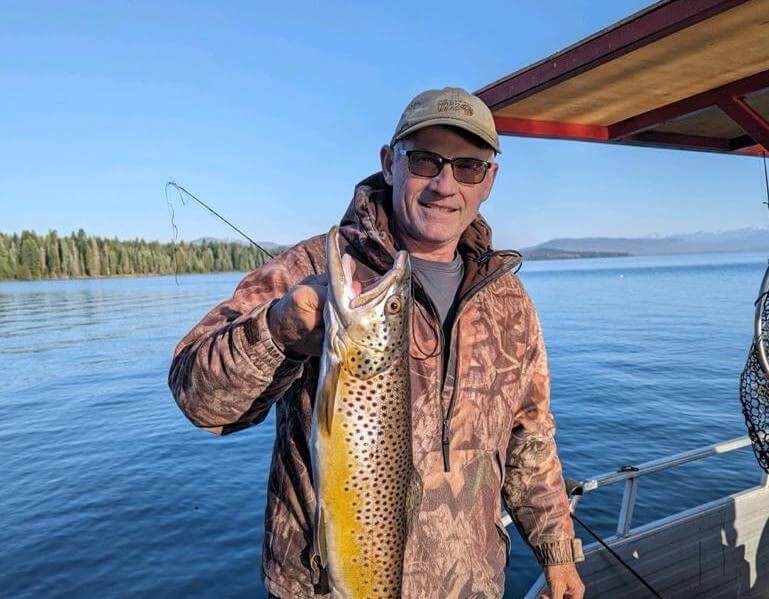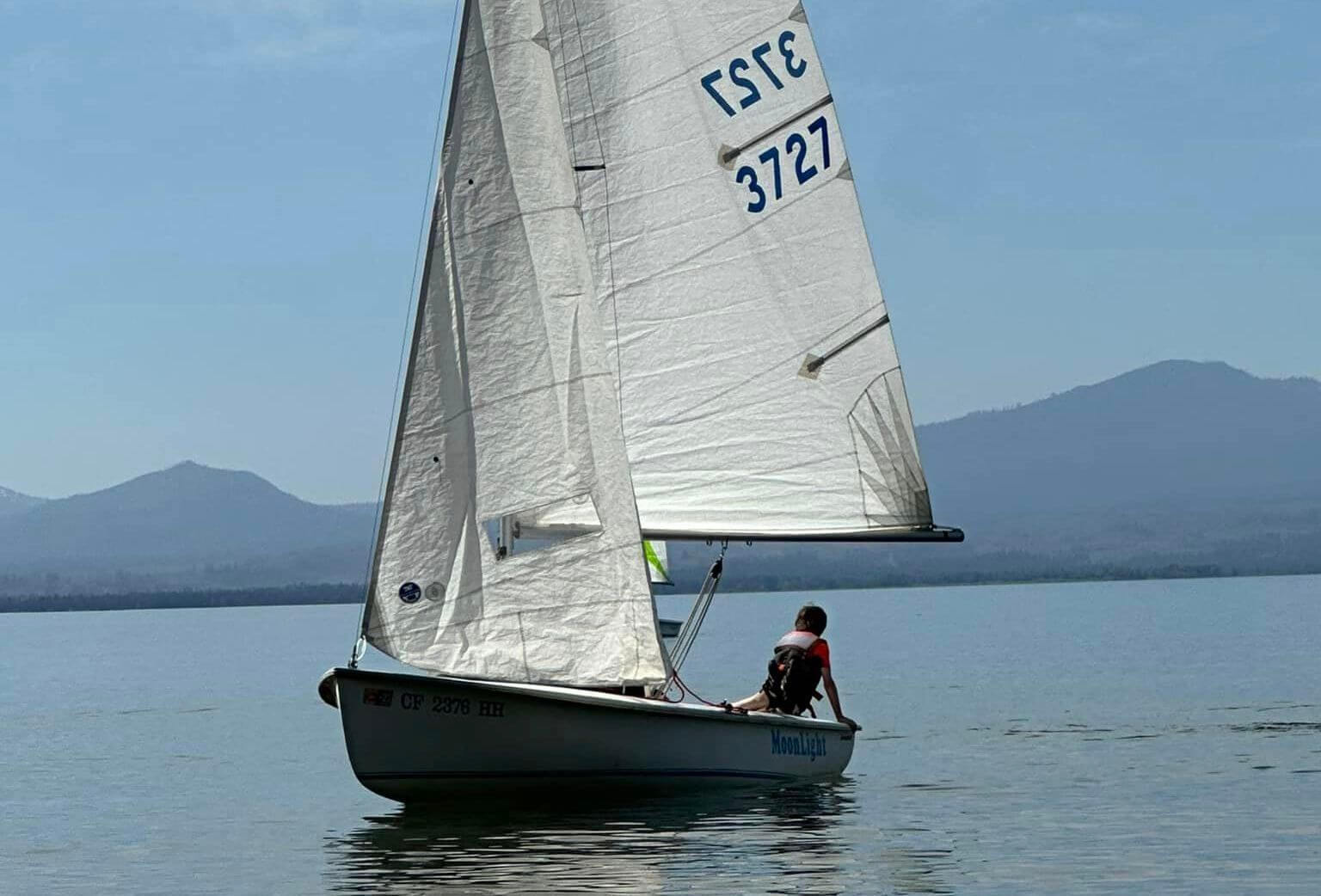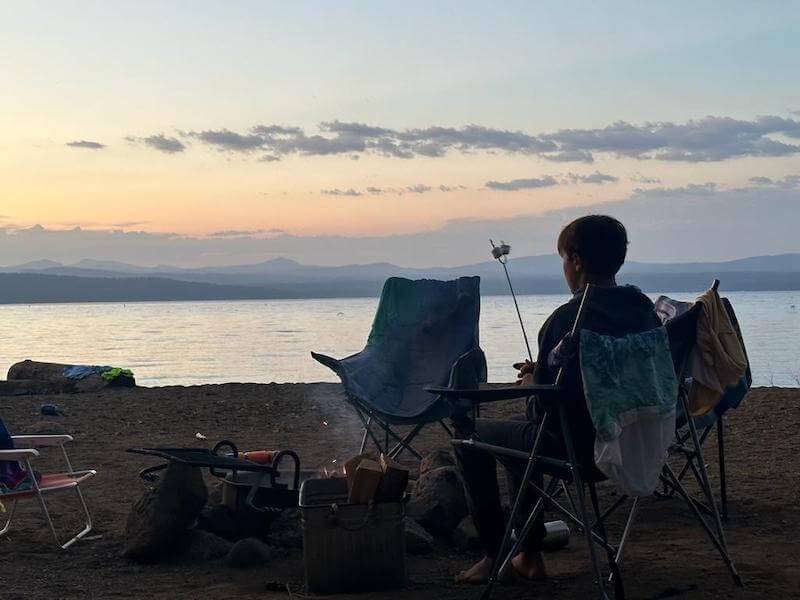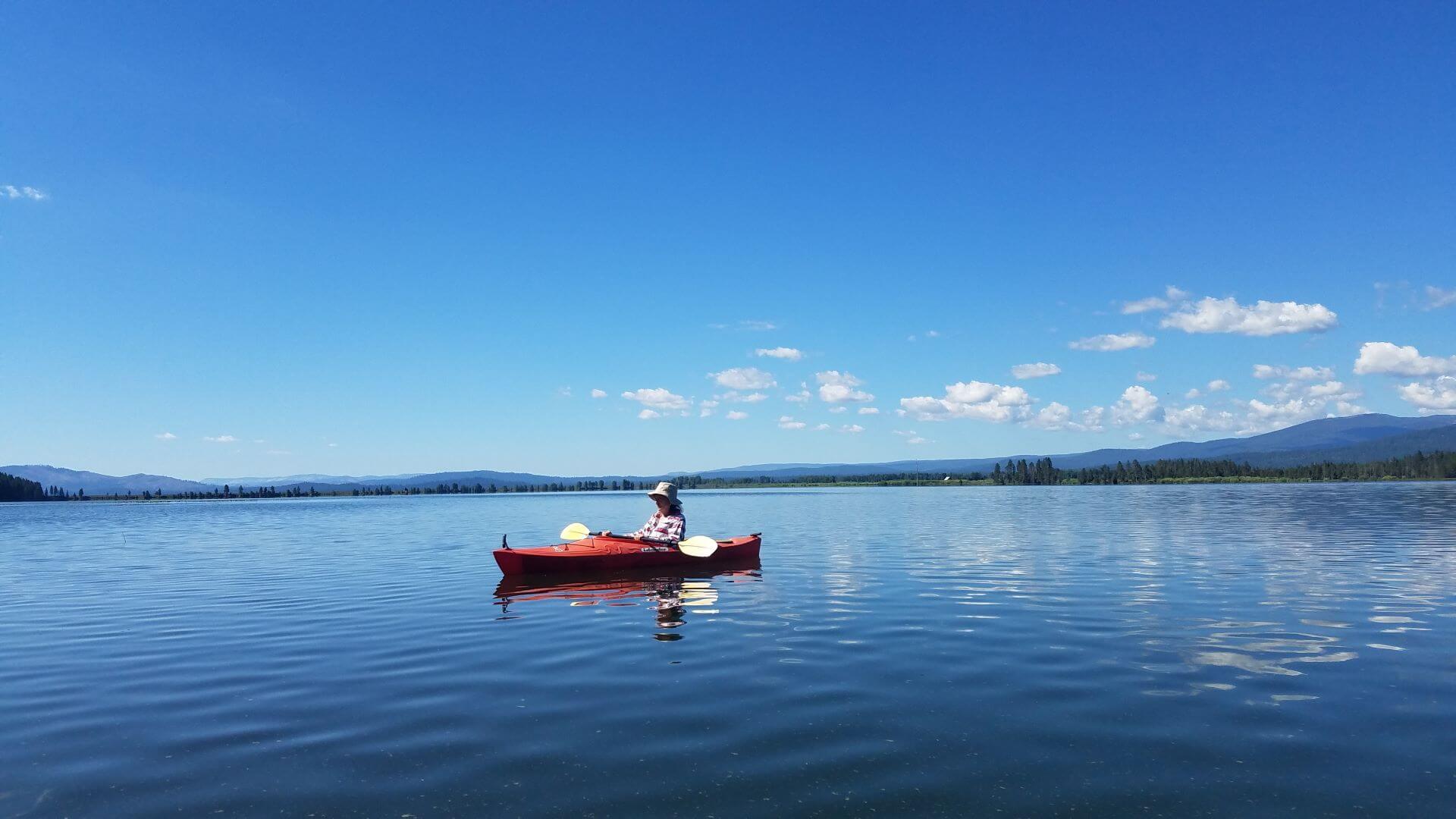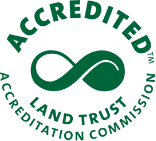About Lake Almanor
Protecting public access and scenic landscapes
Fed by the North Fork Feather River, Lake Almanor’s waters and surrounding wetlands, meadows, and forests sustain vibrant communities of humans and wildlife alike.
Fast Facts
- 29,057 acres at Lake Almanor including Chester Meadows
- Protected by: Conservation Easement
- Protected for: Clean water, wildlife habitat, recreation, scenic open space, history and culture
- Rare or threatened species: 23
- Landowner: Pacific Gas and Electric Company
Working together to protect Lake Almanor
In partnership with Pacific Gas and Electric Company (PG&E) and the Stewardship Council, FRLT has permanently protected 29,057 acres of publicly important lands and waters at Lake Almanor with a conservation easement. This conservation easement held by FRLT prevents subdivision and detrimental land use changes within the protected property, including the reservoir itself. PG&E will continue to own and operate Lake Almanor and manage recreation facilities and leases.
The Lake Almanor conservation easement is part of a larger effort by the California Public Utilities Commission, PG&E, the Stewardship Council, and a variety of stakeholders to conserve 140,000 acres of PG&E watershed lands throughout California for ongoing public benefit. Approximately 44,000 acres of these watershed lands are within the upper North Fork Feather River Watershed. FRLT is the local conservation organization designated to hold conservation easements on these lands. Feather River Watershed lands protected by FRLT through this project include Lake Almanor, Bucks Lake, Mountain Meadows Reservoir, Butt Valley Reservoir, and five properties now owned and conserved by the Maidu Summit Consortium including Tásmam Koyóm (Humbug Valley).
Jan Davies Photography
Ellie Hinrichs
FRLT/Sophia Micheletti
Water & Ecology
The North Fork Feather River flows from its headwaters near Lassen Peak into Lake Almanor. The lake is also fed by the cold water of Hamilton Branch, Last Chance and Benner Creeks, and many natural springs. Water from Lake Almanor flows into the North Fork Feather River, down the Feather River Canyon and Highway 70 corridor to Lake Oroville. Lake Almanor provides a critical source of water to the CA State Water Project, which delivers water to 27 million Californians and 750,000 acres of farmland downstream. This abundance of water contributes to incredible habitat diversity. Lake Almanor is a diverse landscape made up of 16 individual habitat types, including riparian wetlands in Chester Meadows and mixed conifer forest along the southern and eastern banks.
Photo by Betty Bishop, all rights reserved
Norm Williams
Norm Williams
Norm Williams
Flora & Fauna
The vast landscape of Lake Almanor’s 29,057 acres and its diversity of habitats support a wide range of wildlife species. From Chester Meadows—with grebes, coyotes, and river otters— to the vast lakeshore and surrounding forest—with black bears, Bald Eagles, and Osprey—you’re sure to see nature in action when you visit Lake Almanor.
This diverse habitat range also makes Lake Almanor home to 23 rare or threatened species. Designated an Important Bird Area by California Audubon, these lands support thousands of waterfowl and shorebirds each year, as well as California’s densest population of Yellow Warbler and the second largest concentration of Willow Flycatcher (a CA endangered species) in the state. Lake Almanor is also home to a variety of fish species and is one of northern California’s prized year-round brown and rainbow trout fisheries.

Chester Meadow alone is among the crown jewels of FRLT’s protected lands, supporting the 2nd largest concentration of endangered Willow Flycatcher in the Sierra/southern Cascades of California (15% of the entire population), 3 pairs of breeding Greater Sandhill Cranes, the densest population of Yellow Warbler we know of in the state, among many others.
—Ryan Burnett, Point Blue Conservation Science
Don't miss an update
Get FRLT news and events in your inbox
By submitting this form, you are consenting to receive marketing emails from: Feather River Land Trust. You can revoke your consent to receive emails at any time by using the SafeUnsubscribe® link, found at the bottom of every email. Emails are serviced by Constant Contact
Recreation & Public Access
Lake Almanor has been beloved by locals and visitors alike for generations. In the warmer months, camping, boating and swimming are popular, and fishing can be enjoyed year-round. At an elevation of 4,505 feet, winter brings cold weather and picturesque views of snowcapped Lassen Peak from the shoreline. Lake Almanor is the largest reservoir in the Feather River region and one of the most iconic and beautiful lakes in northern California. PG&E-owned recreation facilities and public access to them are part of FRLT’s conservation easement. With three existing picnic areas, campgrounds and a boat launch, public enjoyment of the lake will be sustained for generations to come.
Julie Wann
Sadie Benny
Sadie Benny
Ellie Hinrichs
Culture & History
Lake Almanor is part of the ancestral homeland of the Mountain Maidu who have inhabited these lands since time immemorial. The area now covered by Lake Almanor was known as Big Meadows and included several Maidu villages.
The reservoir was created in 1914 when the Great Western Power Company (later acquired by Pacific Gas & Electric Company) dammed the North Fork of the Feather River. The name Almanor was derived from combining the names of the power company president’s three daughters—Alice, Martha, and Elinore.
The reservoir inundated several Maidu cultural areas, but important sites remain near the shoreline and are protected by the conservation easement. In addition to the protected lands at Lake Almanor that remain in PG&E ownership, five other properties previously owned by PG&E have been reacquired and conserved by the Maidu Summit Consortium, with FRLT holding conservation easements. The Feather River Land Trust honors the Mountain Maidu and their relationship to this land and deep knowledge of the interconnectedness of all things in this ecosystem.
Stewardship of Lake Almanor
As the conservation easement holder, FRLT will meet with PG&E annually about management plans and potential impacts on special resources and public values at Lake Almanor. FRLT will visit and inspect the property on an annual basis to ensure that the terms of the easement are being upheld.

PG&E is proud to partner with Feather River Land Trust to protect these lands. This is another important step in PG&E’s work to permanently protect more than 140,000 acres of watershed lands. We look forward to continuing our work with Feather River Land Trust on these and other lands in Plumas and Lassen Counties.
—Mike Schonherr, PG&E Director overseeing the Land Conservation Commitment program
Protect what you love
Help conserve and restore critical headwaters and habitats for wildlife, plants, and people
Why Conservation?
Since 2000, the Feather River Land Trust has worked to protect private lands for the public good in the Sierra Nevada’s largest watershed, the Feather River —a source of drinking water for 27 million people. Protecting Lake Almanor is consistent with our goals, which include protecting clean water, wildlife habitat, working landscapes, public recreation, and cultural sites. Conserving PG&E’s Lake Almanor lands with a conservation easement permanently restricts subdivision of the reservoir and Chester Meadows (restricted subdivision and no private development outside of the current leased areas) and ensures the preservation of open space. These lands and waters are a tremendous asset to our regional economy and local communities and sustain a diversity and abundance of birds and other wildlife.
Beneficial Public Values
The conservation easement at Lake Almanor protects multiple features and values that benefit the public. PG&E and the Stewardship Council refer to these as “Beneficial Public Values.” Conserving PG&E watershed lands is driven by the following Beneficial Public Values:
- protection of the habitat for fish, wildlife, and plants
- preservation of open space
- outdoor recreation by the public
- sustainable forestry
- agricultural uses
- historical and cultural values
Frequently Asked Questions
What is a conservation easement and who will own the lands at Lake Almanor?
A conservation easement is a legal agreement between a landowner and the land trust to permanently protect private land and limit development, subdivision, and changes to land-use. For the conservation easement at Lake Almanor, the 29,057 acres currently owned by PG&E are under a permanent conservation easement held by FRLT. The Lake Almanor lands currently owned and operated by PG&E will continue to be owned and operated by PG&E. If the property were to change ownership, the conservation easement will remain with the land forever.
What impact will the conservation easement have on water at Lake Almanor?
PG&E holds water rights to divert, store, and use water from the North Fork Feather River and its tributaries primarily for its hydroelectric projects, although some of PG&E’s water rights authorize use of water for consumptive purposes (for example, agricultural use).
Fisheries and lake levels are managed between PG&E and the State of California. The Water Resources Control Board is the state agency that oversees water rights, water quality, wastewater management and several other water-related topics. The California Department of Fish and Wildlife manages fish, wildlife, plants, and habitats for the health of their populations and for enjoyment by the public. The conservation easement will not have a direct impact on water levels or water management by PG&E.
PG&E has a contract to deliver and/or supply 145,000-acre feet of water annually for agricultural irrigation. Actual delivery occurs through the California Department of Water Resources to the Western Canal Water District from the Hamilton Branch facility, and four other facilities (Upper North Fork Feather River, Rock Creek-Cresta, Poe, and Bucks Creek), each of which contribute water to fulfill this contract. The Western Canal Water District holds the water rights to this contract and the agreement cannot be altered except by mutual consent. PG&E can use the water to generate power and has some discretion over the timing for delivery of this water but must deliver it between March 1 and October 31 of each year.
Under the terms of the conservation easement and Settlement Agreement, FRLT will not have enforcement authority over water-related issues.
Does the conservation easement have anything to do with the Thermal Curtain?
No. As a conservation organization, FRLT is concerned about any project that could impact water quality, wildlife habitat, cultural resources, and other beneficial public values at Lake Almanor. However, the conservation easement at Lake Almanor will not address water management at the Lake due to pre-existing water use agreements (see above).
Will public access to the lake and surrounding PG&E lands change?
Authorized public access to PG&E lands will continue, and the conservation easement does not impose any changes to existing authorized uses. PG&E has committed to making numerous public access improvements following the approval of the Federal Energy Regulatory Commission 2105 license. Existing unauthorized access points are being documented. PG&E will work to reduce non-authorized access and uses of their lands consistent with their existing land management prescriptions.
Will the conservation easement prohibit hunting?
No. Hunting and fishing are permitted in authorized areas on the PG&E Watershed Lands, in conformance with state and federal rules, regulations, and law, including certain areas in the proposed Lake Almanor conservation easement. Hunting and fishing are specifically listed as examples of uses to be protected by the conservation easement.
Are dogs allowed on the Lake Almanor conservation easement?
Dogs are permitted in accordance with PG&E rules and regulations. The conservation easement does not change any existing permitted uses.
Will the grebes be protected?
FRLT has identified Western & Clark’s Grebe’s breeding habitat as a beneficial public value for the Lake Almanor easement. While the easement does not give FRLT the ability to regulate water levels, FRLT plans to work with PG&E to ensure this value is sustained at Lake Almanor. Specifically, it is FRLT’s position that water level management has negatively impacted nesting success of the grebes. We support ongoing monitoring and a science-based approach to guide water level management, such as that developed by Plumas Audubon, now and into the future.
I have a lease at Lake Almanor. How will this impact me?
Existing leases—including leases for resorts, boat docks, marinas, and public infrastructure—are expressly permitted under the terms of the conservation easement. FRLT has no role, right, or responsibility to monitor and/or enforce the terms of any lease agreements that are issued by PG&E.
What is the status of the FERC 2105 relicensing?
The State Water Board issued a Final Water Quality Certification for the Upper North Fork Feather River Hydroelectric Project on July 15, 2020. It is unclear at this time when the 2105 license will be completed. FRLT is not involved in the FERC licensing process.
Have more questions? Check out the Stewardship Council’s Land Conservation FAQs too!
Lake Almanor Region Properties Conserved
101 Ranch
Conservation FocusLake Almanor
Conservation FocusWarner Valley
Conservation FocusMaidu Cemetery
Conservation FocusHome Ranch
Conservation FocusMaidu Wetlands
Conservation FocusButt Valley Reservoir
Conservation FocusMaidu Trail
Conservation FocusMaidu Forest
Conservation FocusTásmam Koyóm (Humbug Valley)
Conservation FocusMountain Meadows Reservoir
Conservation FocusMountain Meadows Gateway Preserve
Conservation FocusOlsen Barn Meadow
Conservation FocusYou Can Count On Us
As a nationally accredited land trust, we are built to last. We leverage your donations with state, federal, and foundation dollars and strategic partnerships to achieve the greatest possible impact for the lands, waters, and people of the Feather River region. You can count on us to make careful and effective use of your support.
More Stories from FRLT
Plein Air Painting Club
Join us monthly at the Nature Center for the Plein Air Painting Club with Sarah Horton.
Land Trust Accreditation
Since 2015, FRLT has been a nationally accredited land trust. Now, we're applying for renewal and the public comment period is now open.
2024 Conservation Successes
Take a look back at 2024 with us and celebrate all you helped make possible in the Feather River Watershed.
FRLT Nature Journaling Club
Join FRLT's new Nature Journaling Club as we visit each of FRLT's five public preserves!
Home & 101 Ranch Conservation Story
Home & 101 Ranches, owned by timber company Sierra Pacific Industries, are now protected with conservation easements.
Impact Reports
From protecting headwaters and biodiversity to enhancing access to nature, learn what our supporters make possible.
2023 Conservation Successes
Take a look back at 2023 with us and celebrate all you helped make possible this year in the Feather River Watershed.
Protecting PG&E Headwater Lands
We worked with PG&E and Maidu Summit Consortium to protect 43,000+ acres of important Maidu homelands, headwaters, and habitats for public benefit.
FRLT Preserve Coloring Pages
Our gift to you - coloring pages of all five of our preserves, illustrated by an FRLT staff member.

